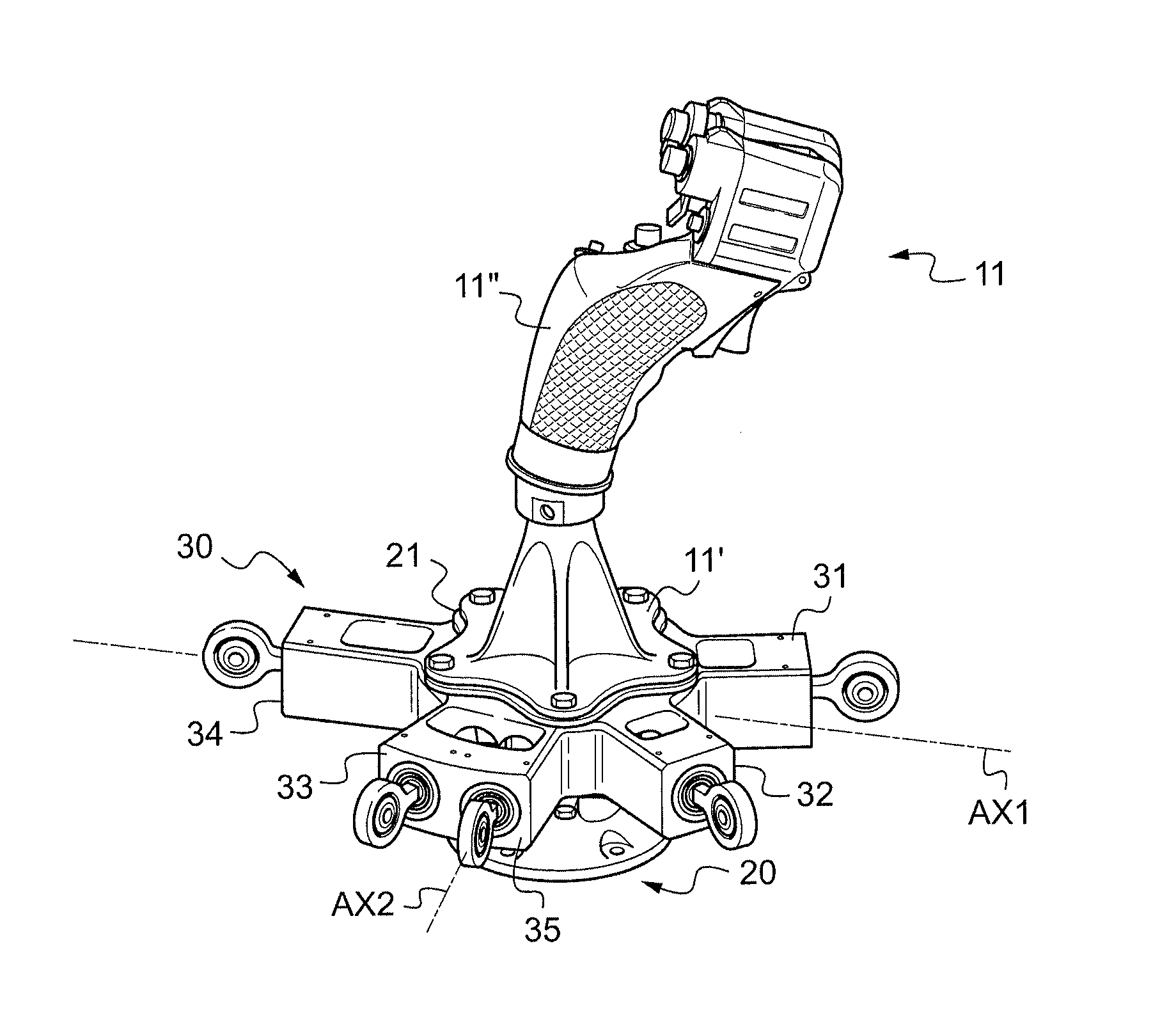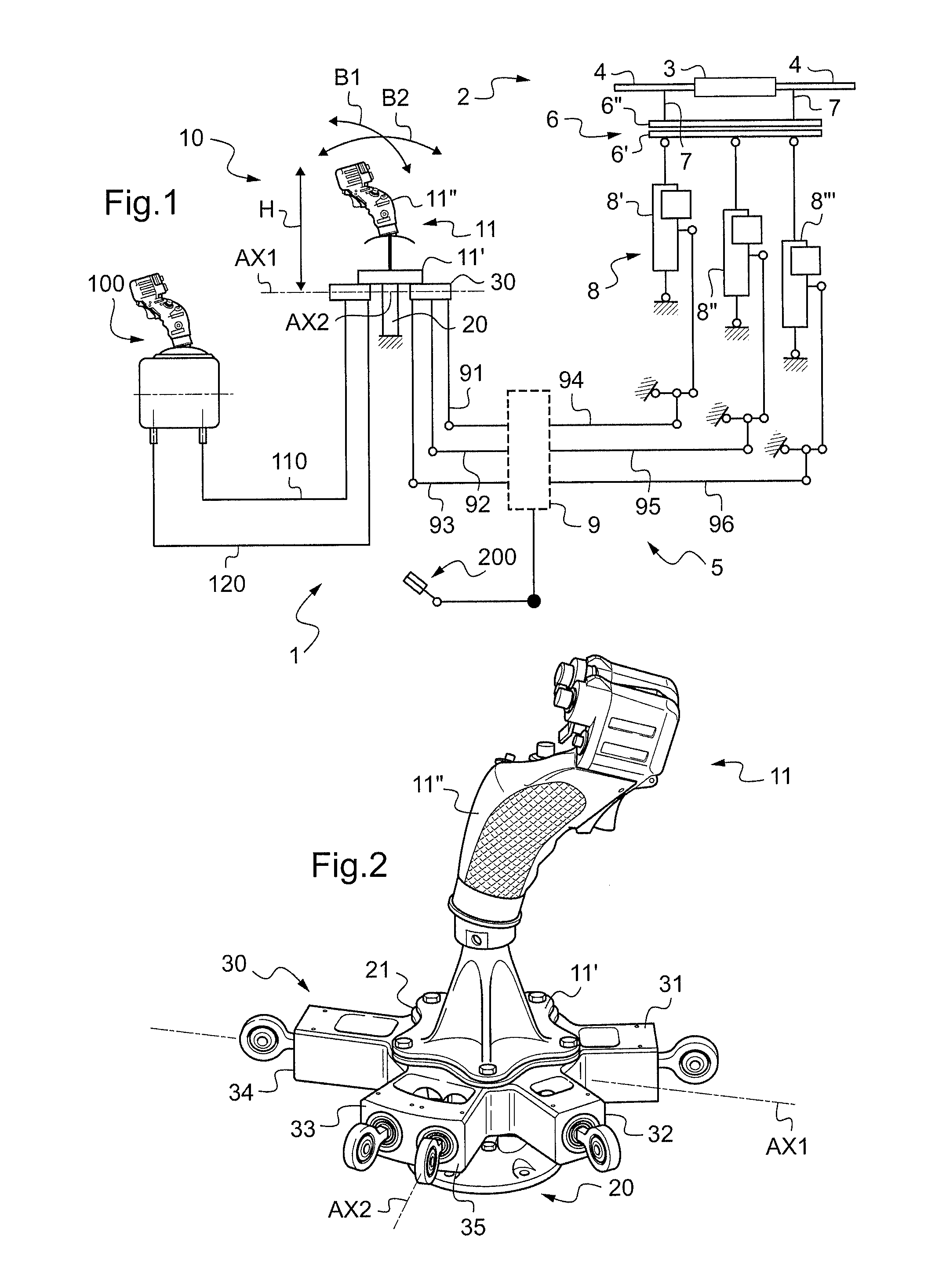Control lever for controlling a rotary wing, a mechanical control system including said control lever, and an aircraft
a technology for controlling a rotary wing and a control lever, which is applied in the field of flight control systems, can solve the problems of high friction in the mechanical structure and the difficulty of implementing a short cyclic stick with mechanical transmission on a rotary wing aircraft, and achieve the effect of minimizing the friction force of the set of mechanical members going from the control lever to the power member
- Summary
- Abstract
- Description
- Claims
- Application Information
AI Technical Summary
Benefits of technology
Problems solved by technology
Method used
Image
Examples
first embodiment
[0059]FIG. 1 shows an aircraft 1 in a first embodiment, the aircraft being shown schematically to avoid pointlessly overloading FIG. 1. The aircraft 1 has a rotary wing 2 provided with a hub 3 carrying a plurality of blades 4. Under such circumstances, the aircraft 1 has a control system 5 for controlling the cyclic pitch of the blade 4, or indeed for controlling the collective pitch of said blades 4.
[0060]The control system 5 is a mechanical system controlling the pitch of the blades 4, and it comprises a set 6 of control swashplates, the set 6 including a non-rotary swashplate 6′ that co-operates with a rotary swashplate 6″ that is in turn connected to each of the blades 4 by a respective pitch rod 7. Such a set is sometimes known under the term “cyclic swashplate”.
[0061]The control system 5 then includes a control lever 10 for cyclically controlling the pitch of the blades 4 by acting on the set 6 of control swashplates.
[0062]In order to minimize the forces needed to operate the ...
second embodiment
[0079]With reference to FIG. 2, in a second embodiment, the phasing means 30 are fastened to a movable portion 21 of the carrier structure 20.
[0080]As can be seen with reference to FIG. 4, the carrier structure 20 has a movable portion 21 that is movable about the first hinge axis AX1 and about the second hinge axis AX2, and also a stationary portion 22 that is fastened to a point in the cabin of an aircraft.
[0081]The carrier structure 20 is then provided with a hinge connecting the movable portion 21 to the stationary portion 22, this hinge including link means 23 of the spider type. The link means 23 are provided with a first shaft 24 that is elongate along the first hinge axis AX1 and with a second shaft 25 that is elongate along the second hinge axis AX2.
[0082]Each shaft 24 and 25 has two distinct extreme portions 24′&24″ and 25′&25″ that are connected together by a perforated central portion 26.
[0083]Consequently, the movable portion has a first plate 21′ carrying two first che...
PUM
 Login to View More
Login to View More Abstract
Description
Claims
Application Information
 Login to View More
Login to View More - R&D
- Intellectual Property
- Life Sciences
- Materials
- Tech Scout
- Unparalleled Data Quality
- Higher Quality Content
- 60% Fewer Hallucinations
Browse by: Latest US Patents, China's latest patents, Technical Efficacy Thesaurus, Application Domain, Technology Topic, Popular Technical Reports.
© 2025 PatSnap. All rights reserved.Legal|Privacy policy|Modern Slavery Act Transparency Statement|Sitemap|About US| Contact US: help@patsnap.com



